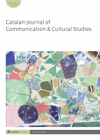
Full text loading...
 , Andreu Casero-Ripollés1
, Andreu Casero-Ripollés1
The use of mobile instant messaging services is increasing among citizens. Applications like WhatsApp, with more than 2 billion users around the world, have changed the way we communicate. The objective of this research is to know how citizens make use of the WhatsApp service launched by the town hall of their municipality of residence. To do so, an online survey was carried out on 1202 citizens residing in Spain. The sample has been stratified considering the size of the municipality of residence of the respondents. The results show that the City Council’s WhatsApp service has greater penetration in smaller municipalities (up to 10,000 inhabitants). Therefore, these citizens would show more serious concern for local politics than the rest. Regarding its use, it stands out how residents in small municipalities use it more for informational purposes, while residents in medium municipalities (from 10,001 to 100,000 inhabitants) and large municipalities (more than 100,001 inhabitants) participate more and use it more frequently to register for the services offered by the City Council, as well as to raise doubts about the management run by the municipal corporation.

Article metrics loading...

Full text loading...
References


Data & Media loading...

Publication Date:
https://doi.org/10.1386/cjcs_00071_1 Published content will be available immediately after check-out or when it is released in case of a pre-order. Please make sure to be logged in to see all available purchase options.